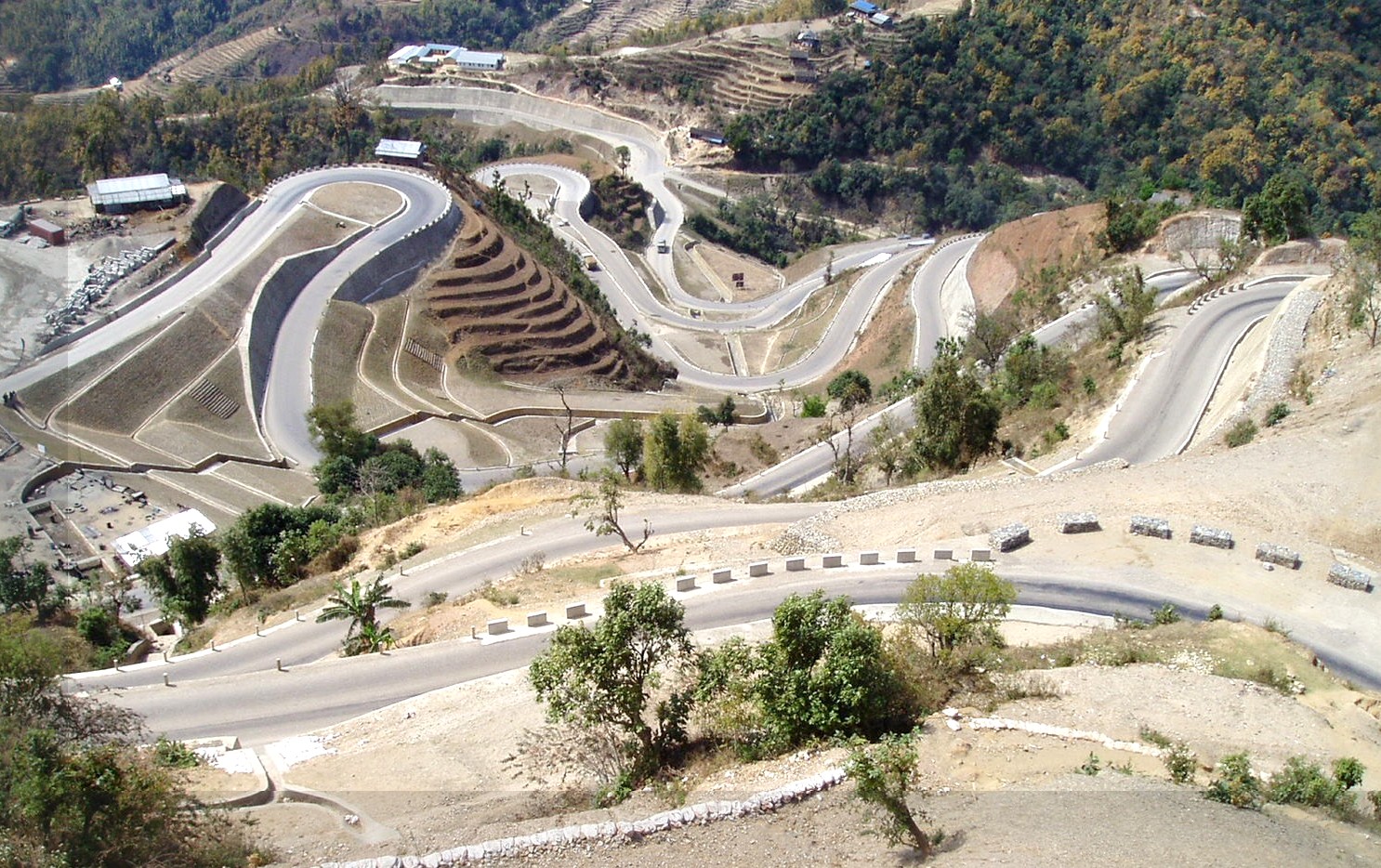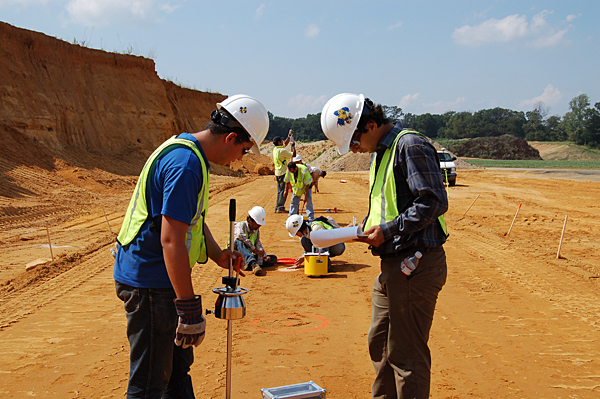The Influence of a Tailings Engineer on Lasting Mining Practices
Wiki Article
The Interdisciplinary Approaches in the Geotechnical Market: Connecting the Void Between Design, Geology, and Environmental Science for Optimum Task Results
The integration of design, geology, and environmental scientific research within the geotechnical industry is not just useful; it is necessary for achieving optimum job outcomes. This interdisciplinary partnership cultivates a detailed understanding of complex website conditions, permitting cutting-edge options to emerge. By checking out vital functions and successful instance studies, we can uncover the vibrant interaction that drives job success. However, challenges continue to be in efficiently taking care of these multidisciplinary efforts, questioning about future patterns and potential developments. What approaches might arise to promote this crucial collaboration and enhance the effectiveness of geotechnical practices?Value of Interdisciplinary Cooperation
The relevance of interdisciplinary collaboration in the geotechnical market can not be overstated. Efficient geotechnical projects need the assimilation of varied competence from different fields, including design, geology, and ecological scientific research. This partnership ensures that all elements of a project are considered, resulting in extensive remedies that address intricate obstacles.When functioning in isolation,Interdisciplinary cooperation promotes development by enabling experts to share insights and techniques that might not be apparent. By leveraging the staminas of several self-controls, groups can determine possible threats, maximize design procedures, and enhance the sustainability of geotechnical projects. Such partnership advertises a holistic understanding of site-specific problems, which is important for exact evaluation and decision-making.
The intricacy of geotechnical jobs demands a coordinated approach to problem-solving. When designers, rock hounds, and ecological researchers collaborate, they can produce a natural approach that aligns technological needs with environmental considerations and regulatory compliance. This harmony not just improves project results however additionally adds to the lasting strength of facilities. Eventually, interdisciplinary cooperation is important for progressing ideal practices and achieving excellence in the geotechnical market.
Trick Roles of Each Discipline
Collaboration amongst numerous self-controls is not simply advantageous; it is important for the successful implementation of geotechnical jobs. Each self-control-- engineering, geology, and environmental science-- plays a distinct yet interconnected function that adds to forecast efficacy and sustainability.Geotechnical designers are largely in charge of designing structures and making certain architectural stability. They assess dirt and rock buildings to analyze load-bearing capacities, giving essential information for risk-free construction practices. Their experience makes it possible for the formula of innovative remedies to complicated challenges.

Ecological researchers examine the potential influences of building on ecosystems and water sources. They conduct ecological evaluations and develop mitigation strategies to minimize adverse impacts. By integrating ecological factors to consider, they make certain conformity with policies and advertise sustainability throughout the job lifecycle.
Situation Research Studies of Successful Assimilation
Effective assimilation of geotechnical techniques can be exhibited with numerous study that highlight the efficiency of teamwork in addressing complicated engineering difficulties. One remarkable instance is the building of the Hong Kong-- Zhuhai-- Macau Bridge, where a collaborative approach entailing geotechnical engineering, geology, and ecological scientific research was important. Engineers and rock hounds worked in unison to examine the seabed conditions and optimize the structure style, ensuring stability and minimizing environmental effect.An additional impactful instance is the improvement of incline security in the San Francisco Bay Area, where an interdisciplinary group combined geotechnical analysis with environmental analyses. By integrating geological surveys and hydrological studies, the team successfully recognized potential landslide risks and executed effective reduction measures, boosting safety and security and sustainability.
Additionally, the redevelopment of Brownfield sites usually requires a multidisciplinary technique. In one case in Chicago, cooperation among geotechnical engineers, ecological scientists, and urban planners resulted in the successful removal of contaminated soil, enabling the risk-free improvement of the site into a neighborhood park. These study show that interdisciplinary partnership not only addresses technical obstacles but additionally promotes cutting-edge remedies that profit both jobs and neighborhoods.
Difficulties in Multidisciplinary Projects

Moreover, collaborating schedules and operations amongst different teams can be bothersome, especially when each technique has one-of-a-kind job milestones and deliverables. This imbalance can result in hold-ups and boosted costs. The obstacle of resource appropriation likewise looms huge; guaranteeing that specialized knowledge is readily available at critical junctures calls for cautious preparation and foresight.
Finally, governing compliance postures another significant challenge. Each self-control might face different regulatory structures, and aligning these needs to meet job goals can be lengthy and complicated. Dealing with these challenges requires solid management and effective communication techniques to foster partnership and ensure that multidisciplinary groups function cohesively in the direction of shared goals.
Future Trends in Geotechnical Practices
As the geotechnical market advances, arising trends are reshaping techniques to address the difficulties dealt with in multidisciplinary tasks - engineer of record. One substantial trend is the enhanced combination of innovative modern technologies, such as expert system and device learning, into geotechnical evaluation and design. These technologies enhance predictive modeling and risk assessment, allowing engineers to make more informed decisions throughout the job lifecycle
Furthermore, the fostering of electronic doubles and real-time tracking systems is becoming a lot more widespread. These devices assist in recurring analysis of soil conditions and structural performance, permitting timely treatments when problems arise.
Verdict
To conclude, the combination of engineering, geology, and ecological scientific research is important for attaining optimal results in the geotechnical industry. Interdisciplinary partnership promotes technology, boosts analytic abilities, and aligns technological requirements with ecological sustainability. Effective study illustrate the benefits of this approach, while recognizing the difficulties faced in multidisciplinary jobs. Looking in advance, embracing these collaborative techniques will be vital for browsing future patterns and advancing the area of geotechnical design.The assimilation of engineering, geology, and ecological science within the geotechnical market is not merely beneficial; it is imperative for achieving optimum project end results. Effective geotechnical tasks call for the combination of varied experience from different fields, consisting of engineering, geology, and ecological science.Browsing the intricacies of multidisciplinary tasks in the geotechnical market offers several substantial challenges.As the geotechnical sector progresses, emerging patterns are improving practices to attend to the difficulties encountered in multidisciplinary projects. Geotechnical designers are increasingly working together with ecological scientists to make certain that projects align with sustainability objectives and abide with regulatory needs.
Report this wiki page